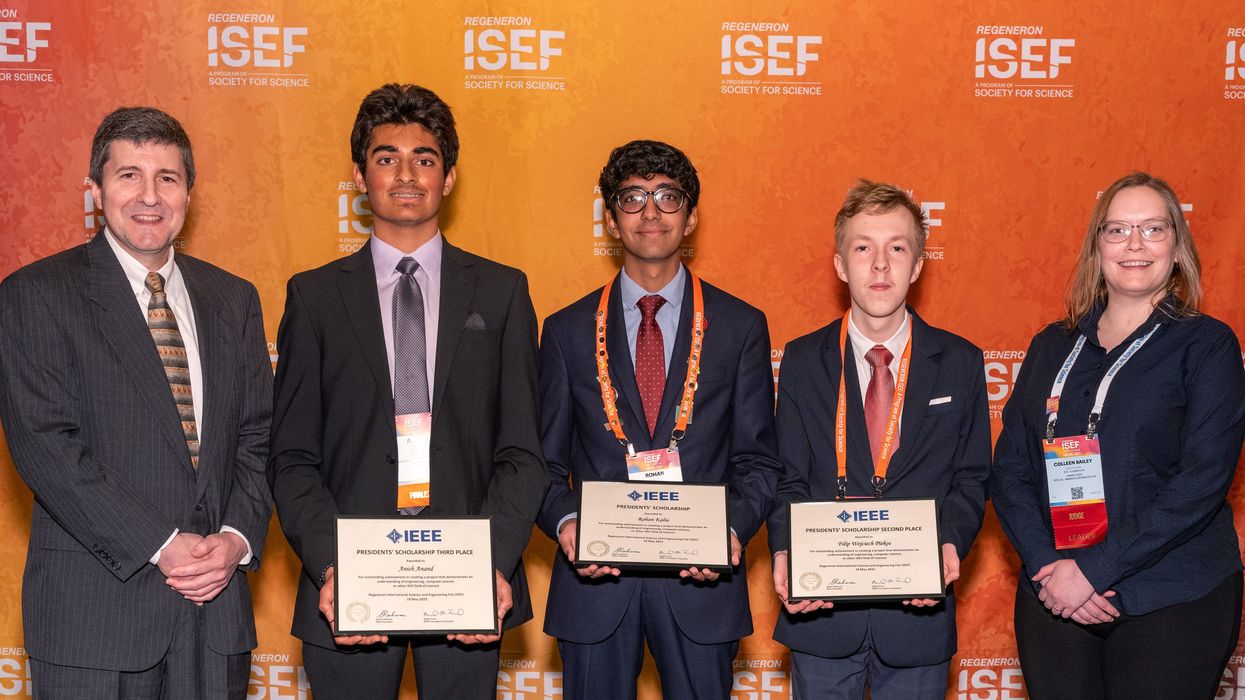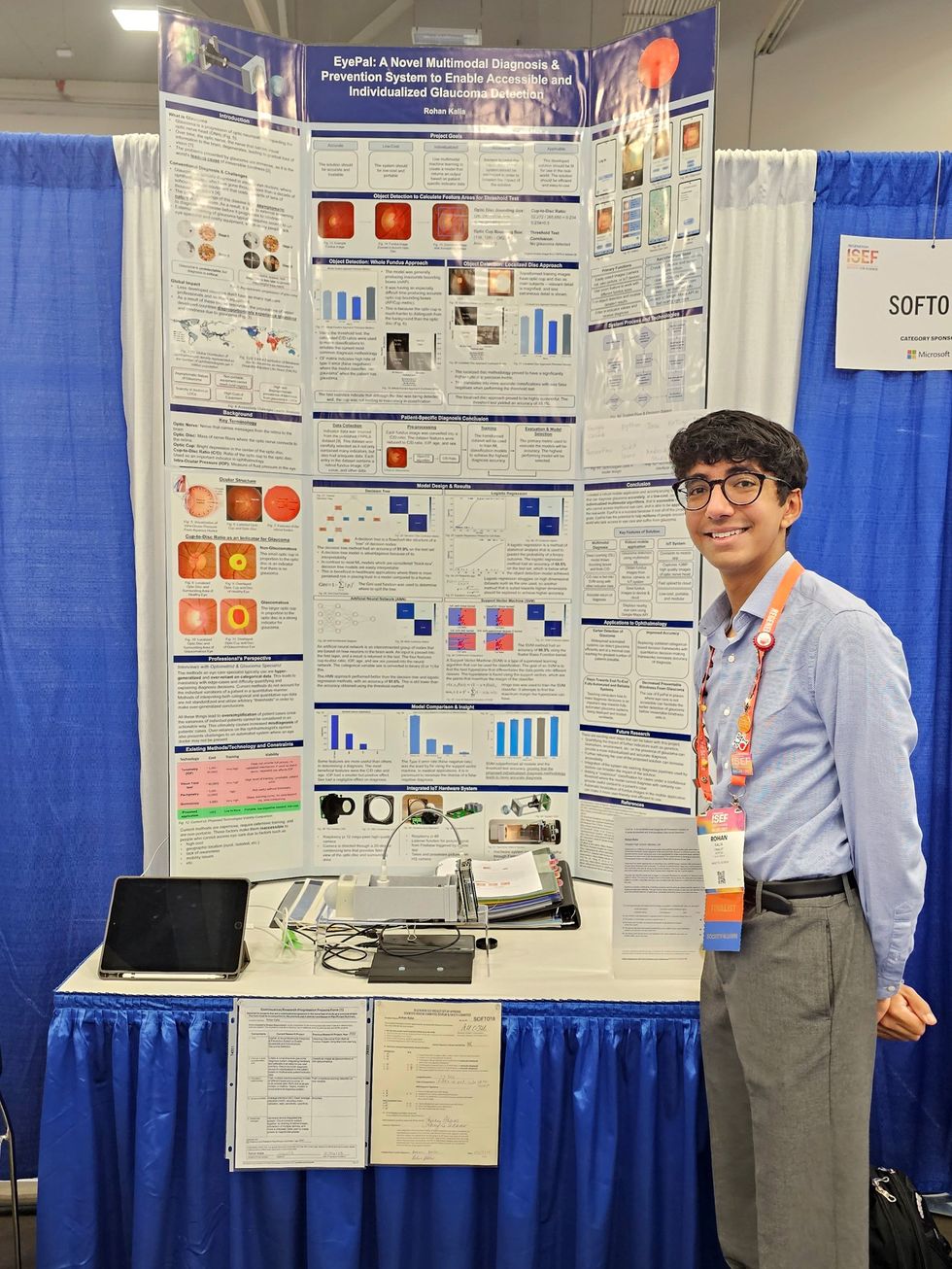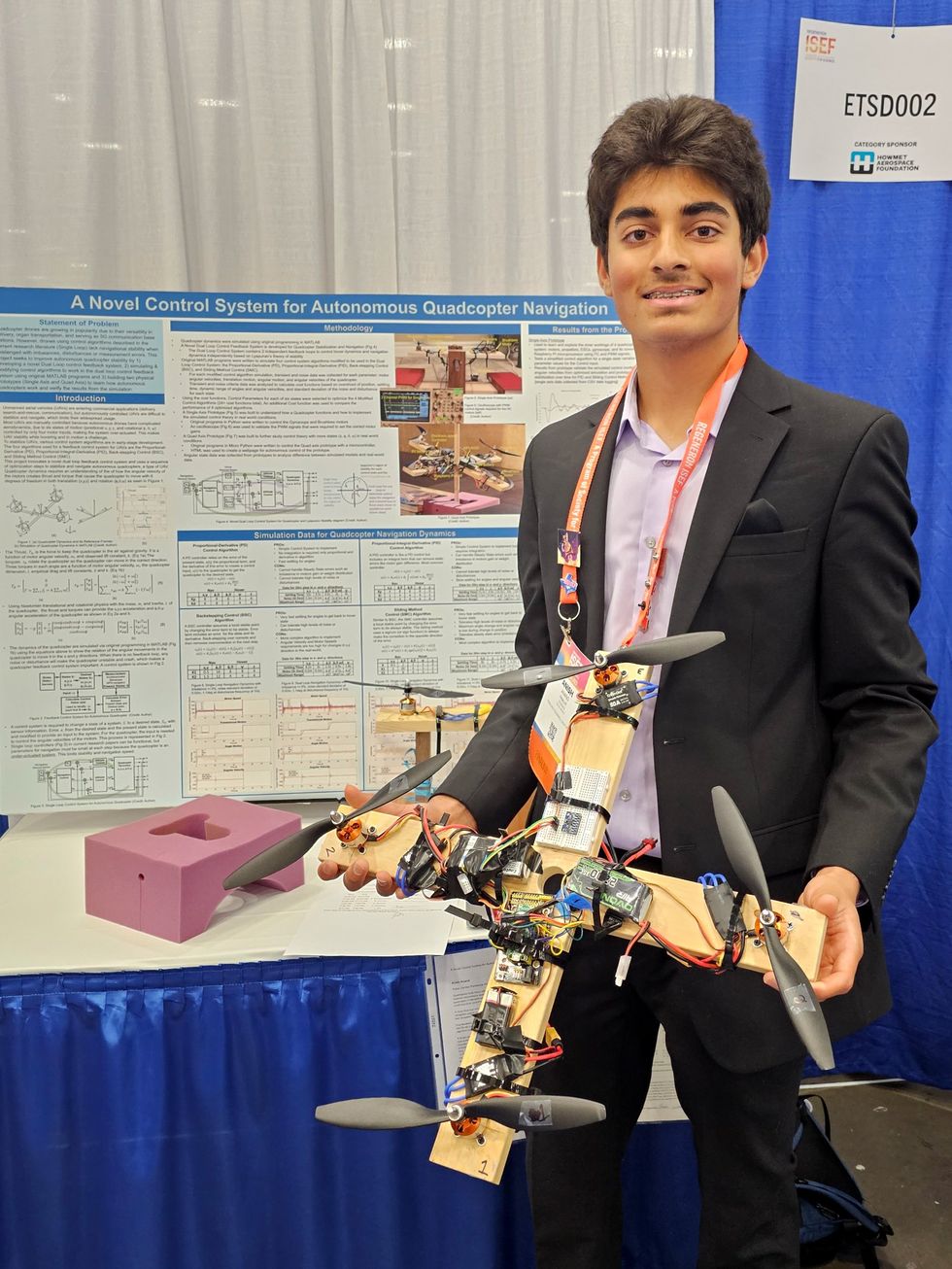Teen Wins Scholarship for His Glaucoma-Detection Device

Glaucoma is the second leading cause of irreversible blindness worldwide, according to the U.S. Centers for Disease Control and Prevention. The optic nerve that carries visual information to the brain degenerates, leading to a gradual loss of vision. If not caught early, some degree of permanent blindness can occur. Even expensive treatments, which cost between US $600 and $2,500 per year depending on the severity of the disease, cannot reverse the damage.
After one of teenager Rohan Kalia's family members was diagnosed with glaucoma, he began researching an affordable technology that could be used for early detection. Kalia is a sophomore at Wheeler High School in Marietta, Ga. He built a portable, inexpensive device that can accurately diagnose the condition.
Kalia's EyePal was showcased at the Regeneron International Science and Engineering Fair (ISEF) held in May in Dallas.
Eyepal, described as a novel multimodal diagnosis and prevention system to enable accessible and individualized glaucoma detection, won this year's IEEE Presidents' Scholarship of US $10,000. The IEEE Foundation established the award to acknowledge a deserving student whose project demonstrates an understanding of electrical or electronics engineering, computer science, or other IEEE field of interest. The scholarship is administered by IEEE Educational Activities and is payable over four years of undergraduate university study.
Kalia and the second- and third-place scholarship winners also receive a complimentary IEEE student membership. IEEE Senior Member Bob Becnel, IEEE Region 5 director, presented Kalia with the scholarship.
EyePal also came in third place in the ISEF's systems software category, earning Kalia a $1,000 award.
An affordable glaucoma-detection device Rohan Kalia's EyePal medical device provides accessible, affordable, and individualized glaucoma diagnosis with its camera, a Raspberry Pi, machine-learning technology, and a mobile app. Lynn Bowlby
Rohan Kalia's EyePal medical device provides accessible, affordable, and individualized glaucoma diagnosis with its camera, a Raspberry Pi, machine-learning technology, and a mobile app. Lynn Bowlby
Eye abnormalities such as glaucoma are detected from images taken of the retinal fundus during a standard examination. The fundus is the back surface of the eye's interior and includes the retina, the macula, the optic disc, the fovea, and blood vessels. Typically the images are taken by an ophthalmologist, who uses specialized equipment.
Kalia discovered during his research that a person's socioeconomic situation impacts whether glaucoma is diagnosed.
I learned that there's a huge disparity in eye care treatment across the world," he says. Diagnosis and prevention of glaucoma is not accessible."
He found that in rural areas, testing for the condition was often out of reach for many people because of a lack of eye doctors and testing centers, as well as the high cost of the equipment, a lack of health insurance, and the price of the test.
The EyePal uses a quality camera, a Raspberry Pi minicomputer, machine-learning technology, and a mobile app. The camera takes photos of the fundus and sends them to a mobile device that can be examined by a specialist. EyePal showed a 95 percent accuracy when tested on sets of fundus images, Kalia says.
Unlike standalone specialized equipment that can be used only in a doctor's office or vision testing center, the EyePal is portable, so it can be employed in rural medical centers and health clinics.
The device costs less than $100," he says. It's 50 times cheaper than the average price of ophthalmology equipment, in addition to being highly portable. What I did was create this new ensemble-based system of diagnosis."
Kalia says he didn't expect to win the Presidents' Scholarship.
It was a nice surprise," he says. It was surreal going up on the stage and shaking [Becnel's] hand in front of everyone."
Kalia's advice for future engineers is to keep going despite obstacles: In an engineering project, you're going to face times you want to give up, but keep persevering.
Pick a project topic that you really like," he adds. When you're really interested in the topic, it will give you the motivation to keep pushing through."
Kalia hasn't started looking at universities to attend, he says, but his career plans include working in research, most likely in the area of vision.
I love creating solutions," he says, and building things for people."
A computer keyboard for people with disabilities Filip Piko displays his contactless, programmable computer keyboard Zhelta, which uses a magnetized wand attached to the brim of a baseball cap for those dexterity problems.Lynn Bowlby
Filip Piko displays his contactless, programmable computer keyboard Zhelta, which uses a magnetized wand attached to the brim of a baseball cap for those dexterity problems.Lynn Bowlby
This year's second-place recipient was Filip Piko, a junior from Zespo Szko Technicznych i Ogolnoksztaccych in Jarosaw, Poland. He received $600 for his project, Zhelta. The contactless, programmable computer keyboard was designed for people who cannot use a traditional one because of dexterity problems or other health issues.
Computer keyboards generally require the use of both hands-a problem that Piko noticed when a friend with multiple sclerosis was unable to use one. His friend attached a pencil to a baseball cap with a large brim; by moving his head while wearing the cap, he could type with the pencil.
I improvised it using a similar functionality with a magnetic pointer that you can also attach to a baseball cap," Piko says. My project is meant for people with disabilities, especially limb paralysis. I designed, prototyped, and built a custom keyboard that doesn't require a person to use their hands. Instead, it uses a pointer that hovers about the keys-which activates their function."
The touchless Zhelta can be activated mechanically by pressing a switch and magnetically using a pointer attachment, instead of pressing keys. The length of the pointer can be adjusted based on the best angle and height for the user. The pointer either can clip to the bill of a cap or be held, according to a PoLand of IT masters interview with Piko about his keyboard.
The keyboard has an OLED display so users can view the software they are using. Piko used CAD software to connect the keyboard to a computer via USB while mounted on a stand.
Piko says he would like his project to have a lasting impact.
I hope that this can become a real product and something that could help others around the world," he says. I didn't expect any awards for my project, so I was really excited that I managed to get one."
He says he hopes to attend an engineering university in the United States and follow through on Zhelta's product development.
I'm excited for what's to come," he says.
Using quadcopters as 5G base stations Anish Anand holds his quadcopter, modified to operate as a 5G communication base station to provide high-speed low-cost Internet for those living in rural areas. Lynn Bowlby
Anish Anand holds his quadcopter, modified to operate as a 5G communication base station to provide high-speed low-cost Internet for those living in rural areas. Lynn Bowlby
Anish Anand, a freshman at Palos Verdes Peninsula High School, in Rancho Palos Verdes, Calif., took third place. He received $400 for his project, A Novel Control System for Autonomous Quadcopter Navigation."
When visiting family in India, Anand noted his relatives lacked high-speed Wi-Fi.
They had 2G Wi-Fi," he says, because the infrastructure for high-speed Wi-Fi was too expensive [for the local telecommunications company] to build."
He wanted to figure out a way to provide high-speed, low-cost Internet for undeveloped areas in India. After reading about ways to tackle the problem, he decided to try using autonomous quadcopters as 5G communication base stations.
From his research he found that existing autonomous quadcopters use a single loop-control system for all six degrees of freedom. But the method can be unstable, and the copter could crash during air disturbances or imbalances.
To tackle the instability problem, he built a dual-loop control system based on Lyapunov's theory of stability, which describes the state of being stable in a system such as Anand's. After applying the changes to quadcopters, they can operate more effectively as 5G communication base stations.
With my dual-loop control system, I optimized the quadcopters' movements through the original Matlab programs and prototypes I made from scratch," he says. I found that my control system was twice as fast and two to three times more stable than current single-loop control systems."
The technology that Anand is exploring, he says, has the potential to bring higher-speed low-cost Internet to rural areas.
He says he was excited to be interviewed by several news outlets: It was really great having all these people come and let me talk about my project. When I got the award, it was such a surreal moment, especially walking up to the stage."
Anand participates in many extracurricular activities at his school, including its math team, the Science Olympiad, and StellarXplorers, a program run by the Air and Space Forces Association.
He says he hopes to earn a Ph.D. in electrical engineering and pursue a career in the field.